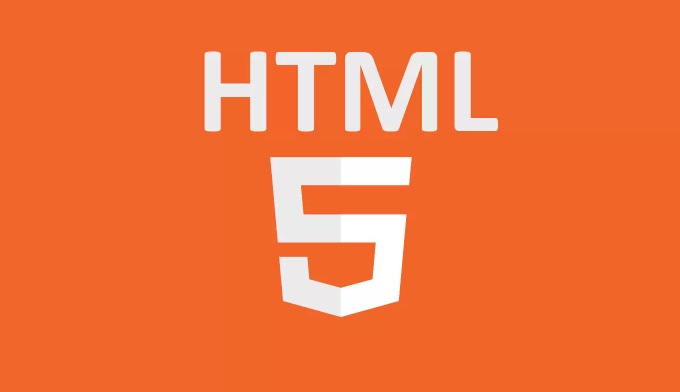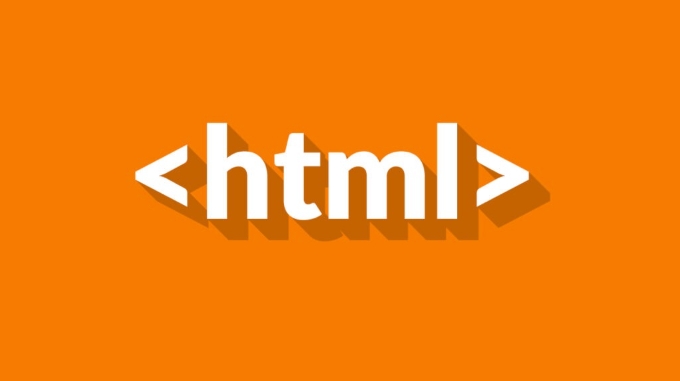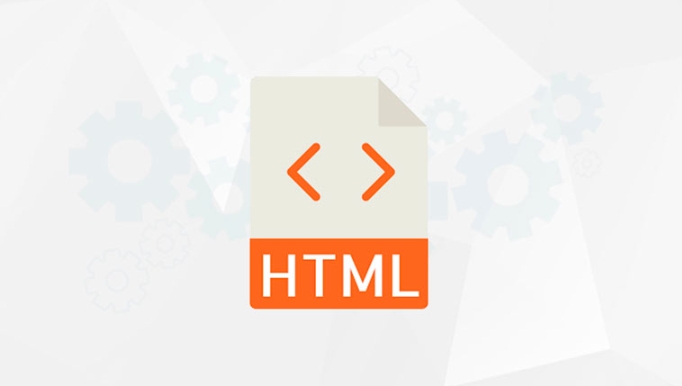The importance attribute is an attribute in HTML that specifies resource loading priority. It supports three values: high, low and auto. It can be used for tags such as  , <link>, <script>, <iframe>, etc. By setting the importance level, developers can control the order of resource loading, such as setting the critical CSS or home screen image to high, and setting the non-critical script or lazy loading resources to low, thereby optimizing page loading performance. It should be noted that not all browsers fully support this property. Currently, the Chromium kernel browser supports it well. It is recommended to use it in combination with other optimization methods such as lazy loading, resource splitting, etc., and monitor the loading effect through DevTools. Rational use of importance can improve user experience, but abuse of high values should be avoided to affect the browser's default policy.
, <link>, <script>, <iframe>, etc. By setting the importance level, developers can control the order of resource loading, such as setting the critical CSS or home screen image to high, and setting the non-critical script or lazy loading resources to low, thereby optimizing page loading performance. It should be noted that not all browsers fully support this property. Currently, the Chromium kernel browser supports it well. It is recommended to use it in combination with other optimization methods such as lazy loading, resource splitting, etc., and monitor the loading effect through DevTools. Rational use of importance can improve user experience, but abuse of high values should be avoided to affect the browser's default policy.

The browser has begun to support a new HTML attribute importance , which allows developers to specify priority for resource loading. This property can be used for tags such as <link> , <img src="/static/imghw/default1.png" data-src="https://img.php.cn/upload/article/000/000/000/175303607485397.jpeg" class="lazy" alt="HTML `importance` Attribute for Resource Prioritization" > , <script></script> , etc., to help the browser better determine which resources should be loaded first.

Its basic usage is:
<img src="/static/imghw/default1.png" data-src="logo.png" class="lazy" importance="high" alt="HTML `importance` Attribute for Resource Prioritization" > <link rel="stylesheet" href="main.css" importance="low">
Currently, mainstream browsers support for this attribute is still being gradually improved (especially in the browsers of the Chromium kernel), but it has shown the potential to optimize page loading performance.

What is importance attribute?
importance is an HTML attribute that tells the browser the importance of a resource, thereby affecting its loading priority. It accepts three possible values:
-
auto: default behavior, priority is determined by the browser -
high: Tagging this resource should be loaded as soon as possible -
low: means that the resource can be loaded later
For example, if you want to load critical CSS or home screen images faster, you can use importance="high" ; while some non-critical scripts or delayed loading images can use importance="low" .

Which tags can be used with importance ?
Currently the following tags support importance attribute:
-
<img src="/static/imghw/default1.png" data-src="analytics.js" class="lazy" alt="HTML `importance` Attribute for Resource Prioritization" > -
<link>(such as CSS, preload) -
<script> -
<iframe>
This allows you to control the loading order of different types of resources more granularly. For example:
<script importance="low"></script> <link rel="preload" href="font.woff2" as="font" type="font/woff2" importance="high">
It should be noted that not all resource types recommend setting this property. For example, for asynchronously loaded scripts or lazy-loaded images, using importance="low" can avoid blocking key content.
Practical application scenarios and suggestions
In actual projects, rational use of importance can improve user experience, especially when the mobile terminal or network is slow. Here are some suggestions:
- Home Logo and Key Pictures : Set to
importance="high"to speed up the rendering awareness of the first screen. - Non-critical JS files (such as statistics scripts) : Set to
importance="low"to avoid affecting the main process. - CSS main style file : It is usually already high priority, but if you have multiple style sheets, you can mark the core style as high.
- Lazy loaded pictures or videos : Set to low so that the browser will first process more important resources.
But be careful not to abuse high , otherwise it may disrupt the browser's original reasonable loading strategy. It is recommended to use high only for resources on the real "critical path".
Browser compatibility and considerations
Currently, importance has been supported in Chrome, Edge, Opera and other Chromium-based browsers. Firefox and Safari are not fully implemented yet.
If you want to start trying now, you can add this property, and do not rely on it as the only optimization method. It is best to use it with other technologies, such as:
- Use
loading="lazy"to control lazy loading of images - Reasonably split JS/CSS resources
- Set the correct HTTP cache header
In addition, you can view the resource loading waterfall diagram through DevTools and observe the changes after setting importance .
Basically that's it. Although it doesn't seem complicated, it still needs to be judged based on specific scenarios when using it well in actual projects.
The above is the detailed content of HTML `importance` Attribute for Resource Prioritization. For more information, please follow other related articles on the PHP Chinese website!

Hot AI Tools

Undress AI Tool
Undress images for free

Undresser.AI Undress
AI-powered app for creating realistic nude photos

AI Clothes Remover
Online AI tool for removing clothes from photos.

Clothoff.io
AI clothes remover

Video Face Swap
Swap faces in any video effortlessly with our completely free AI face swap tool!

Hot Article

Hot Tools

Notepad++7.3.1
Easy-to-use and free code editor

SublimeText3 Chinese version
Chinese version, very easy to use

Zend Studio 13.0.1
Powerful PHP integrated development environment

Dreamweaver CS6
Visual web development tools

SublimeText3 Mac version
God-level code editing software (SublimeText3)
 Applying Semantic Structure with article, section, and aside in HTML
Jul 05, 2025 am 02:03 AM
Applying Semantic Structure with article, section, and aside in HTML
Jul 05, 2025 am 02:03 AM
The rational use of semantic tags in HTML can improve page structure clarity, accessibility and SEO effects. 1. Used for independent content blocks, such as blog posts or comments, it must be self-contained; 2. Used for classification related content, usually including titles, and is suitable for different modules of the page; 3. Used for auxiliary information related to the main content but not core, such as sidebar recommendations or author profiles. In actual development, labels should be combined and other, avoid excessive nesting, keep the structure simple, and verify the rationality of the structure through developer tools.
 Implementing Clickable Buttons Using the HTML button Element
Jul 07, 2025 am 02:31 AM
Implementing Clickable Buttons Using the HTML button Element
Jul 07, 2025 am 02:31 AM
To use HTML button elements to achieve clickable buttons, you must first master its basic usage and common precautions. 1. Create buttons with tags and define behaviors through type attributes (such as button, submit, reset), which is submitted by default; 2. Add interactive functions through JavaScript, which can be written inline or bind event listeners through ID to improve maintenance; 3. Use CSS to customize styles, including background color, border, rounded corners and hover/active status effects to enhance user experience; 4. Pay attention to common problems: make sure that the disabled attribute is not enabled, JS events are correctly bound, layout occlusion, and use the help of developer tools to troubleshoot exceptions. Master this
 Configuring Document Metadata Within the HTML head Element
Jul 09, 2025 am 02:30 AM
Configuring Document Metadata Within the HTML head Element
Jul 09, 2025 am 02:30 AM
Metadata in HTMLhead is crucial for SEO, social sharing, and browser behavior. 1. Set the page title and description, use and keep it concise and unique; 2. Add OpenGraph and Twitter card information to optimize social sharing effects, pay attention to the image size and use debugging tools to test; 3. Define the character set and viewport settings to ensure multi-language support is adapted to the mobile terminal; 4. Optional tags such as author copyright, robots control and canonical prevent duplicate content should also be configured reasonably.
 Best HTML tutorial for beginners in 2025
Jul 08, 2025 am 12:25 AM
Best HTML tutorial for beginners in 2025
Jul 08, 2025 am 12:25 AM
TolearnHTMLin2025,chooseatutorialthatbalanceshands-onpracticewithmodernstandardsandintegratesCSSandJavaScriptbasics.1.Prioritizehands-onlearningwithstep-by-stepprojectslikebuildingapersonalprofileorbloglayout.2.EnsureitcoversmodernHTMLelementssuchas,
 How to associate captions with images or media using the html figure and figcaption elements?
Jul 07, 2025 am 02:30 AM
How to associate captions with images or media using the html figure and figcaption elements?
Jul 07, 2025 am 02:30 AM
Using HTML sums allows for intuitive and semantic clarity to add caption text to images or media. 1. Used to wrap independent media content, such as pictures, videos or code blocks; 2. It is placed as its explanatory text, and can be located above or below the media; 3. They not only improve the clarity of the page structure, but also enhance accessibility and SEO effect; 4. When using it, you should pay attention to avoid abuse, and apply to content that needs to be emphasized and accompanied by description, rather than ordinary decorative pictures; 5. The alt attribute that cannot be ignored, which is different from figcaption; 6. The figcaption is flexible and can be placed at the top or bottom of the figure as needed. Using these two tags correctly helps to build semantic and easy to understand web content.
 HTML for email templates tutorial
Jul 10, 2025 pm 02:01 PM
HTML for email templates tutorial
Jul 10, 2025 pm 02:01 PM
How to make HTML mail templates with good compatibility? First, you need to build a structure with tables to avoid using div flex or grid layout; secondly, all styles must be inlined and cannot rely on external CSS; then the picture should be added with alt description and use a public URL, and the buttons should be simulated with a table or td with background color; finally, you must test and adjust the details on multiple clients.
 What are the most commonly used global attributes in html?
Jul 10, 2025 am 10:58 AM
What are the most commonly used global attributes in html?
Jul 10, 2025 am 10:58 AM
class, id, style, data-, and title are the most commonly used global attributes in HTML. class is used to specify one or more class names to facilitate style setting and JavaScript operations; id provides unique identifiers for elements, suitable for anchor jumps and JavaScript control; style allows for inline styles to be added, suitable for temporary debugging but not recommended for large-scale use; data-properties are used to store custom data, which is convenient for front-end and back-end interaction; title is used to add mouseover prompts, but its style and behavior are limited by the browser. Reasonable selection of these attributes can improve development efficiency and user experience.
 How to handle forms submission in HTML without a server?
Jul 09, 2025 am 01:14 AM
How to handle forms submission in HTML without a server?
Jul 09, 2025 am 01:14 AM
When there is no backend server, HTML form submission can still be processed through front-end technology or third-party services. Specific methods include: 1. Use JavaScript to intercept form submissions to achieve input verification and user feedback, but the data will not be persisted; 2. Use third-party serverless form services such as Formspree to collect data and provide email notification and redirection functions; 3. Use localStorage to store temporary client data, which is suitable for saving user preferences or managing single-page application status, but is not suitable for long-term storage of sensitive information.






